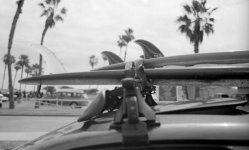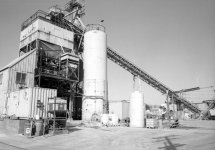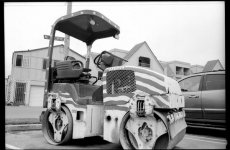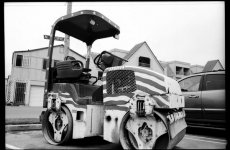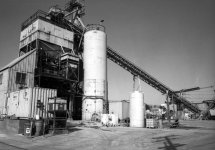the.ronin
Established
I've now had a chance to really get into this Fuji GSW 690II. By way of background, this is my first foray into film having jumped right into DSLR.
First impressions were ... ack so washed out! Second impressions were ... ack still washed out! LOL ... needless to say, I have a lot of learning to do as far as taking properly exposed, crisp pictuers with this camera. The photos I've attached have been touched up to darken the exposure. Most were taken with 100 ISO Ilford or Arcos (might have been an Ilford HP 400 that slipped in here too).
Two issues that I'm starting to see:
1) The GSW 690II seems to overexpose its shots. I use a Sekonic L-208 light meter (using both reflective and incident as appropriate) and I've recently taken down the shutter settings from say f16 / 30 to f16 / 60. My shots are getting better exposure but still leaning towards overexposed in my opinion.
2) I'm having trouble getting crisp, focused shots even at higher f stops. I do wear glasses but my eyesite is not so bad. I do take crisp shots on my DSLR. I have not been using a tripod to take my shots but I figure with the larger lens, do I still need to rely on a tripod as much?
As an aside, I am developing the film myself. I'm using Ilford standard developer for 12 minutes with 4x upside down agitation method at the start of each minute. At least 10 sec of stop bath (2x agitation) and then at least 3 minutes of fixer at the same agitation method as developing. I'm using a cleaning agent to do the final 20x rinse.
As far as developing positives, I am just scanning the negatives with an Epson v600 using the adapter trays that came with it. I do get very impatient and scan as soon as the film is dry but still very curly. I try to flatten as much as possible but there is a lot of curl still when I scan. I do have an inquiry into BetterScanning for their 120 adapters. I use VueScan set to transparency mode, b&w negatives, 3200 DPI, light ICE, export to TIF.
I do notice that when printed on 8.5x11, the detail is pretty awesome. But when viewed on screen, not as spectacular.
If anything but for peace of mind, I was thinking abotu sending this camera in to eitehr Fuji directly or one of their designated repair centers to have a look at the focus / viewfinder calibration and shutter speed in particular. Has anyone done this, and do you think it would be worth it?
Any opinions or feedback greatly appreciated!
First impressions were ... ack so washed out! Second impressions were ... ack still washed out! LOL ... needless to say, I have a lot of learning to do as far as taking properly exposed, crisp pictuers with this camera. The photos I've attached have been touched up to darken the exposure. Most were taken with 100 ISO Ilford or Arcos (might have been an Ilford HP 400 that slipped in here too).
Two issues that I'm starting to see:
1) The GSW 690II seems to overexpose its shots. I use a Sekonic L-208 light meter (using both reflective and incident as appropriate) and I've recently taken down the shutter settings from say f16 / 30 to f16 / 60. My shots are getting better exposure but still leaning towards overexposed in my opinion.
2) I'm having trouble getting crisp, focused shots even at higher f stops. I do wear glasses but my eyesite is not so bad. I do take crisp shots on my DSLR. I have not been using a tripod to take my shots but I figure with the larger lens, do I still need to rely on a tripod as much?
As an aside, I am developing the film myself. I'm using Ilford standard developer for 12 minutes with 4x upside down agitation method at the start of each minute. At least 10 sec of stop bath (2x agitation) and then at least 3 minutes of fixer at the same agitation method as developing. I'm using a cleaning agent to do the final 20x rinse.
As far as developing positives, I am just scanning the negatives with an Epson v600 using the adapter trays that came with it. I do get very impatient and scan as soon as the film is dry but still very curly. I try to flatten as much as possible but there is a lot of curl still when I scan. I do have an inquiry into BetterScanning for their 120 adapters. I use VueScan set to transparency mode, b&w negatives, 3200 DPI, light ICE, export to TIF.
I do notice that when printed on 8.5x11, the detail is pretty awesome. But when viewed on screen, not as spectacular.
If anything but for peace of mind, I was thinking abotu sending this camera in to eitehr Fuji directly or one of their designated repair centers to have a look at the focus / viewfinder calibration and shutter speed in particular. Has anyone done this, and do you think it would be worth it?
Any opinions or feedback greatly appreciated!


